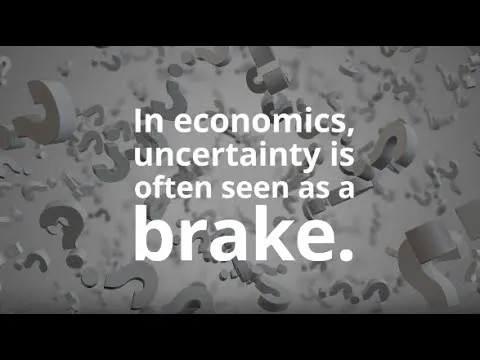
When Uncertainty Is Good for the Economy
Does uncertainty have a negative impact on the economy? The answer is that it depends. According to a recent study (“Downside and Upside Uncertainty Shocks”) by Luca Sala (Bocconi Department of Economics), Mario Forni (University of Modena and Reggio Emilia), Luca Gambetti (University of Turin), published in the Journal of the European Economic Association, uncertainty is not unmitigatedly bad for the economy. In fact, the authors argue that upside uncertainty, i.e. the possibility of better-than-expected economic results, can stimulate economic growth. On the contrary, downside uncertainty, i.e. the possibility of worse-than-expected economic results, has the opposite effect and depresses the economy.
Skewed tails
The study is part of a line of research that investigates the macroeconomic effects of uncertainty. In particular, Forni, Gambetti and Sala start from the empirical observation about the tendency of the expected distribution of GDP growth to become negatively skewed in recessionary phases. This asymmetry is due to the fact that the left tail of the distribution is countercyclical, while the right tail is relatively steady over time.
When we talk about "tails" in statistics, we refer to the extreme parts of a probability distribution function. In this context, the "right tail" represents the probability of positive economic outcomes exceeding expectations, while the "left tail" represents the probability of negative outcomes below expectations. The study then identifies the two types of shocks: an upward uncertainty shock is defined as a shock that thickens the right tail of the distribution, i.e. that it increases the likelihood of positive economic outcomes exceeding expectations, while a downward uncertainty shock thickens the left tail of the distribution, that is, it increases the probability of adverse economic outcomes exceeding expectations.
Methodology and findings
The research of Forni, Gambetti and Sala is based on an innovative econometric approach that combines complex statistical tools. This approach enables estimating the effects of exogenous shocks on uncertainty in terms of the expected distribution of GDP growth.
The results of the study show that downward uncertainty shocks have negative and significant effects on real economic activity. In contrast, upward uncertainty shocks have positive effects, albeit of a lesser magnitude, on real economic activity and positively significant effects on stock prices.
These results suggest that central banks should take into account the differential nature of uncertainty shocks when calibrating their monetary policy. In particular, downward uncertainty shocks, which signal an increase in the probability of adverse events, call for monetary policy interventions aimed at sustaining aggregate demand. Conversely, upward uncertainty shocks, which signal an increase in the probability of favorable events, may call for monetary policy interventions aimed at preventing the economy from overheating.
Uncertainty Is Not Always a Bad Omen

